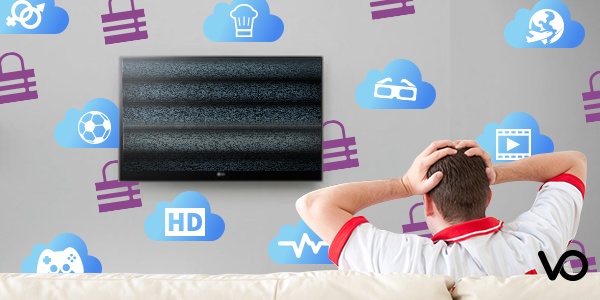
Digital Rights Management (DRM), viewed as the set of technologies enforcing license agreements, has been an integral part of the history of digital content since its very early days.
Its use stretches all the way back into the 1990s and comparatively primitive techniques such as Product Keys, which saw users enter — often repeatedly — long strings of random numbers to validate computer programs like games. Efforts to break such protection technologies have been around for almost as long, as witnessed by the landmark and unanimous passing of The Digital Millennium Copyright Act by the US Senate in 1998. This made it an offence to circumvent access controls and technical protection measures applied to copyrighted works, and thus the struggle against digital piracy became a matter for the criminal courts as well as the copyright holders.
DRM has evolved a lot since then, especially as video content has become more prevalent on the internet. It has been used in two ways by service providers; firstly to protect downloaded media files delivered via on-demand services, while it also provides an added secondary benefit of also guaranteeing secure delivery and management of content.
However, the continuing growth in both online piracy and the establishment of an ever-more complex media ecosystem that embraces OTT and TV Everywhere means that DRM has to continue to evolve. The next frontier lies in cloud-based DRM and this article will briefly explore the reasons for migrating to cloud-based DRM and the key attributes an operator should look for when it comes to choosing a DRM system that is hosted or deployed in the cloud.
Why Choose Cloud DRM?
Several factors have come together to make the concept of cloud-based DRM an ideal requirement in the pay-TV sector.
1. It provides flexibility and support for multiple types of DRM technology. As operators are increasingly relying on a combination of conditional access systems (CAS) working alongside DRM for secure multi-network content delivery for both Live and VOD services, this is an important consideration.
2. It supports different content packaging and content protection formats, and content delivery protocols such as MPEG-DASH and Common Encryption Scheme (CENC). Given the fact that operators are increasingly dependent on adaptive bit rate (ABR) streaming protocols to deliver OTT content to a wide range of devices and that there are also a lot of them (Apple HLS, Microsoft Smooth Streaming, DASH, etc.), this is crucial.
3. The DRM market is becoming increasingly fragmented, while you also have to consider the deprecation of the plug-in APIs on the Google Chrome browser, and the emergence of the DRM-per-device environment. Combined, these factors make it essential that operators adopt a multi-DRM platform that delivers different DRM licenses for the various devices that make up the TV Everywhere ecosystem, including set-top boxes, Connected TVs, PCs, game consoles, smartphones, and tablets.
The Advantages of Cloud DRM
The main benefit of a cloud-based DRM system is that it simplifies things enormously and enables operators to manage everything from a single platform without having to wrestle with the complexity of different and rapidly changing content packaging formats, streaming protocols, and, indeed, DRM itself.
Cloud-based DRM also makes it possible for operators to adopt a multi-DRM approach that is far more in keeping with today's increasingly multiscreen environment.
Lastly, it spins up when required. When it comes to delivering computationally expensive video content that may require real-time, on-the-fly packaging, such as network PVR (nPVR) and catch-up TV services, operators can simply leverage the scalability and elasticity of cloud infrastructures to securely deliver content to an unlimited number of subscribers, faster and more effectively than ever before.
What to Look for in a Cloud-Based DRM System?
So, what should you look out for in your new, cloud-based DRM system? There are three main qualities you need.
1. DASH and Multi-DRM: To prepare content suitable for TV Everywhere and any screen, a cloud DRM system needs to support MPEG-DASH with CENC encryption for set-tops, PCs, and Android devices. It also needs to support a multi-DRM scheme (Microsoft PlayReady, Widevine etc.) along with HLS for iOS devices, as these don't allow applications streaming content over 3G/4G networks with another technology.
2. Cloud-based DRM providers need to work to minimize the number of profiles stored on origin servers. This helps prevent sensitive content from being put at risk while at the same time minimizing the storage cost of required content profiles. The best way of achieving this is by using real-time, on-the-fly packaging capabilities and reducing the number of streams that are cached at the CDN level. MPEG-DASH should be used as much as possible, especially when it comes to live content.
3. Secure Player: Providing a secure video player that includes an integrated DRM agent is also essential. This allows operators to provide a rich and consistent user experience for their premium video service that can scale on all Android and iOS devices.
With these three conditions all met, it’s hard not to conclude that a cloud-based DRM "as a service" solution is the ideal approach in an industry where pay TV operators are looking to protect premium content in the most affordable, flexible, and scalable way possible.
To expand on this topic, download our whitepaper: Adopting DASH & Multi-DRM for Video Delivery:
The full version of this article was originally published in BTR – Broadband Technology Report.


